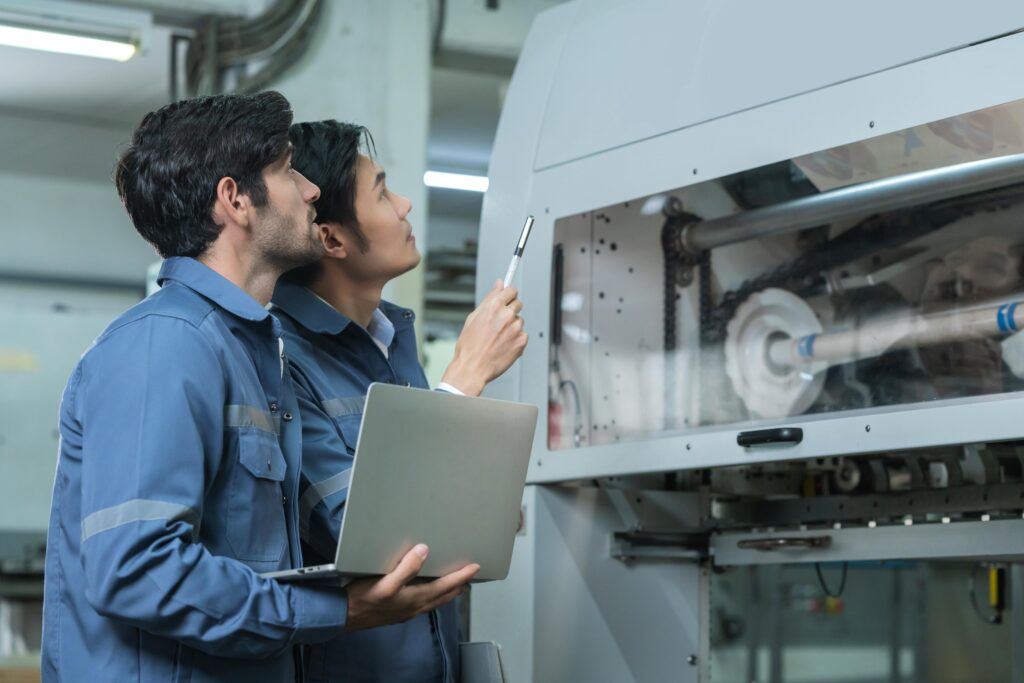Dust collection systems play a crucial role in maintaining a clean and safe working environment in industrial settings. They help to remove airborne particles and contaminants generated during various industrial processes, thereby reducing health hazards, improving air quality, and enhancing overall productivity. This article explores the importance of industrial dust collection systems in industrial settings, including how to set up, install, and comply with regulations, as well as their relevance across different industries.
How to Set Up a Dust Collection System
Assessing Dust Generation Points: Begin by identifying the areas in your industrial facility where dust is generated, such as cutting operations, grinding stations, or material handling processes. Conduct a thorough evaluation to pinpoint the sources of dust.
Determining Airflow Requirements: Calculate the required airflow for your dust collection system. Consider factors such as the size of your facility, the amount of dust generated, and the types of contaminants present. This calculation will help determine the capacity needed for your system.
Selecting an Appropriate Dust Collection System: Based on your assessment, select the most suitable type of dust collection system. Consider the nature of the dust, airflow requirements, space limitations, and budget considerations. Common types include baghouse collectors, cyclone collectors, wet scrubbers, and electrostatic precipitators.
Designing Ductwork and Collection Points: Plan the layout of ductwork to ensure optimal airflow and efficiency. Determine the number and placement of collection points based on the locations of dust generation. Consider accessibility for maintenance and install airtight seals to minimize leaks.
Setting up the best dust collection system: It requires a comprehensive understanding of the dust sources, airflow requirements, and available system options. By properly assessing the dust generation points, determining the necessary airflow, selecting an appropriate system, and designing the ductwork layout, you can establish an efficient dust collection system that effectively captures and removes airborne particles, promoting a safer and healthier industrial environment.
Types of Dust Collection Systems
Baghouse Dust Collection Systems
Baghouse dust collectors use fabric filter bags to capture dust particles. They are highly efficient in collecting fine particulate matter and are commonly employed in industries such as woodworking, pharmaceuticals, and metalworking. The bags are made of various materials like woven or felted fabrics, and they allow air to pass through while trapping the dust particles. Periodically, the bags are cleaned through methods such as pulse-jet cleaning or mechanical shaking to maintain their effectiveness. Baghouse systems offer high filtration efficiency, large capacity for dust storage, and versatility in handling different types of dust.
Cyclone Dust Collection System
Cyclone dust collectors use centrifugal force to separate dust particles from the airflow. As the contaminated air enters the cyclone chamber, it spirals downward, causing heavier particles to move towards the walls and drop into a collection bin, while the cleaner air moves upward and exits through an outlet. Cyclone systems are suitable for larger particulate matter and are commonly used in metalworking, mining, and woodworking industries. They are known for their high airflow capacity, low dust collector maintenance requirements, and cost-effectiveness in handling coarse dust particles.
Pharmaceutical dust collection system
Wet scrubbers use liquid solutions, usually water, to capture and remove dust particles. They are particularly suitable for removing soluble contaminants and are extensively used in chemical and pharmaceutical industries for pharmaceutical dust collection system. The contaminated air passes through a chamber where it comes into contact with the liquid solution, causing the particles to adhere to the liquid droplets. The air is then cleaned as it exits the scrubber.
Cartridge Dust Collection Systems
Cartridge dust collectors utilize pleated filter cartridges to capture dust particles. These cartridges offer a larger filtration surface area compared to traditional filter bags, resulting in higher efficiency and compact design. The contaminated air passes through the cartridges, and the dust particles are trapped on the outer surface or within the media. Cartridge systems are commonly used in industries such as woodworking, pharmaceuticals, and manufacturing processes where space is limited. They provide ease of installation, and efficient dust removal, and can handle a wide range of particulate sizes.
How to Install a Dust Collection System

Proper placement of equipment
When installing a dust collection system, ensure the dust collector unit is centrally positioned to minimize ductwork length and promote efficient airflow. It should be installed on a stable foundation, and measures should be taken to reduce noise.
Installing ductwork
Follow industry standards and guidelines for ductwork installation. This involves ensuring airtight seals, appropriate sizing, and smooth airflow. Proper hangers, supports, and vibration isolation methods should be used for stability.
Electrical and control system connections
Ensure proper electrical connections and controls for the industrial dust collection system, such as motor starters, pressure sensors, and interlock systems, to ensure efficient operation and safety. Professional electricians should handle electrical installations to meet safety standards.
Dust Collection System Regulations

Occupational Safety and Health Administration (OSHA): Compliance with OSHA regulations is essential. This includes adhering to permissible exposure limits (PELs) for specific substances and fulfilling general duty clause requirements related to worker safety.
National Fire Protection Association (NFPA): Following NFPA standards, especially NFPA 654, is crucial for preventing fire and dust explosions in facilities handling combustible dust. These standards outline measures for hazard assessment, prevention, and protection.
Environmental Protection Agency (EPA): Familiarity with EPA regulations, such as the Clean Air Act, helps ensure compliance with air quality standards and pollutant discharge limits. Facilities should implement appropriate dust control measures to minimize emissions and protect the environment. Regular monitoring and reporting may be required.
Materials Removed by Dust Collection Systems
Wood particles and sawdust in woodworking operations: Dust collection systems effectively capture and remove fine wood particles and sawdust produced during cutting, sanding, and routing processes. This prevents the accumulation of combustible materials, reduces the risk of fire, and improves air quality in woodworking shops.
Metal shavings, grinding dust, and fumes in metalworking processes: Dust collection systems play a crucial role in metalworking operations by capturing and removing metal shavings, fine grinding dust, and hazardous fumes. This not only maintains a clean working environment but also protects workers from respiratory issues and prevents the spread of metal contaminants in the facility.
Cement, fly ash, and silica dust in construction and concrete manufacturing: Dust collection systems in the construction industry help control the release of cement, fly ash, and silica dust, which are common byproducts of concrete manufacturing and cutting processes. By effectively capturing these particles, these systems safeguard worker health, reduce the risk of respiratory diseases, and ensure compliance with air quality regulations.
Chemical fumes, powders, and hazardous substances in pharmaceutical and chemical industries: Dust collection systems are crucial in pharmaceutical and chemical industries to control the release of chemical fumes, powders, and hazardous substances. These systems protect workers from exposure to harmful chemicals, prevent cross-contamination, and maintain a safe working environment.
Grain dust in agriculture and food processing: Dust collection systems in agricultural and food processing facilities capture grain dust generated during harvesting, milling, and processing operations. By effectively removing grain dust, these systems minimize the risk of respiratory issues, prevent explosions caused by combustible dust, and maintain hygiene standards in the food production environment.
Dust Collection System as Per Different Industries
Dust Collection in Woodworking: Dust collection systems are vital in woodworking to prevent the accumulation of sawdust and wood particles. These systems help maintain a clean work environment, protect workers from respiratory issues, and reduce the risk of fire hazards.
Dust Collection in Metalworking: In metalworking industries, dust collection systems capture metal shavings, grinding dust, and fumes. They safeguard the health of workers by removing harmful particles, improve equipment efficiency by minimizing debris buildup, and prevent combustible dust-related accidents.
Dust Collection in Construction: Dust collection systems in construction effectively control cement, fly ash, and silica dust, reducing the health risks associated with prolonged exposure to these hazardous materials. They enhance air quality, ensure compliance with environmental regulations, and promote a safer working environment.
Dust Collection in Pharmaceuticals and Chemicals: Dust collection systems in these industries capture chemical fumes, powders, and potentially hazardous substances. They prevent cross-contamination, maintain a sterile environment, and safeguard employees from respiratory ailments and chemical exposure.
Dust Collection in Food Processing and Agriculture: Dust collection systems play a critical role in removing grain dust, flour particles, and other food-related contaminants. They promote worker safety, prevent product contamination, and maintain sanitary conditions in food processing facilities.

